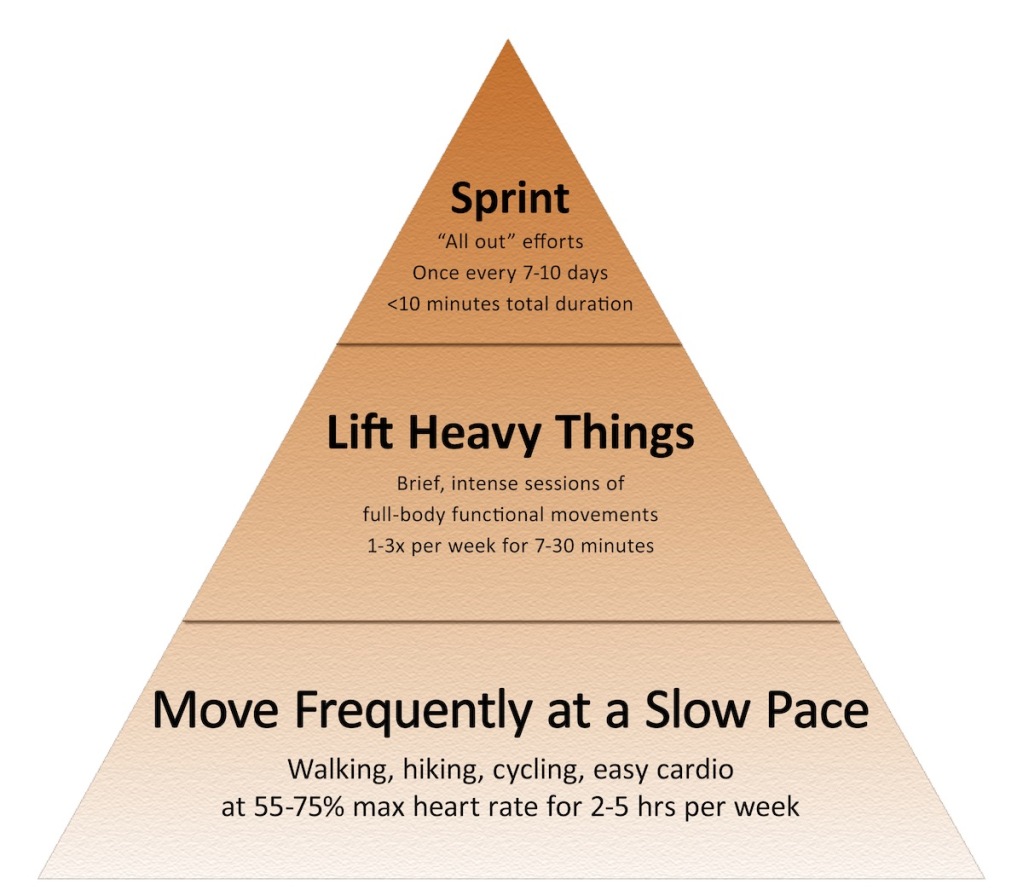[dcwsb inline=”true”]
Don't Just Eat Like a Caveman, MOVE like One!!!
Diets which call for severely limiting carbohydrate won't go away because simply put, they work. That's why the “Paleolithic Diet.” is so popular. Not only does it help someone to lose weight, but it's actually very similar to detox diets (hence healthy). Currently promoted by such nutrition experts as Dr. Michael Eades and Dr. Loren Cordain, the diet asks us consume a selection of food supposedly similar caveman ancestors. Basically its a diet high in lean and clean meats (Grassfed is preferred), nuts, and berries.
That said, we need to continue to remind ourselves of the impact that physical activity plays in maintaining a healthy weight. I believe that our ancestor cavemen and women were so “lean and mean” because they were basically starving and yet MOVED a whole lot. So it's how they lived rather than how they ate.
I always say that our ancestors had to work for food. They didn't wake up in the morning to find yogurt and cereal and toast waiting for them in their kitchen or local supermarket. They had to actually exert a lot of physical energy before eating. An entire day's duration was, occasionally, spent searching for food. For the modern-day American living a mostly sedentary lifestyle, simply eating a carbohydrate-restricted Paleo diet will not make up for the deficit in caloric expenditure.
The comforting truth is that humans can thrive on a host of different diets, including ones featuring lots of carbohydrates. Our species really is a physiological wonder. Throughout history, humans have subsisted as hunter-gatherers, pastoralists, and agriculturalists and have managed to not become excessively rotund or unhealthy. This is because they balanced their eating with physical exertions.
The hunter-gatherer Kung of Botswana” attain about 67% of their energy from plants and consume about 2,100 calories a day. Their average BMI is 19 (normal). The pastoral Quencha of Peru get about 95% of their food from plants and consume about 2,000 calories a day. Their BMI is 21 (normal) . In 2002, Americans received about 77% of their food from plant-based sources and consumed 2,250 calories on average. Our average BMI was 26 (overweight).
There is no dietary silver bullet. Severely restricting essential nutrients from your diet — be they proteins, fats, or carbohydrates — probably isn't a good idea for the long haul. You must learn to balance energy intake with energy expenditure.
A good way to achieve this energy stability may not be by eating like a caveman, but instead moving like one. Americans don't have to gather mushrooms or hunt squirrels with spears, but they can try walking to the grocery store. Or they could go “primal” by pretending they're hunting mammoth while on the treadmill.
Heck, standing instead of sitting burns about fifty more calories per hour. Considering that some Americans spend as many as twelve hours per day on their bottoms, that might be a good place to start.
Don't Just Eat Like a Caveman, MOVE like One!!!
Diets which call for severely limiting carbohydrate won't go away because simply put, they work. That's why the “Paleolithic Diet.” is so popular. Not only does it help someone to lose weight, but it's actually very similar to detox diets (hence healthy). Currently promoted by such nutrition experts as Dr. Michael Eades and Dr. Loren Cordain, the diet asks us consume a selection of food supposedly similar caveman ancestors. Basically its a diet high in lean and clean meats (Grassfed is preferred), nuts, and berries.
That said, we need to continue to remind ourselves of the impact that physical activity plays in maintaining a healthy weight. I believe that our ancestor cavemen and women were so “lean and mean” because they were basically starving and yet MOVED a whole lot. So it's how they lived rather than how they ate.
I always say that our ancestors had to work for food. They didn't wake up in the morning to find yogurt and cereal and toast waiting for them in their kitchen or local supermarket. They had to actually exert a lot of physical energy before eating. An entire day's duration was, occasionally, spent searching for food. For the modern-day American living a mostly sedentary lifestyle, simply eating a carbohydrate-restricted Paleo diet will not make up for the deficit in caloric expenditure.
The comforting truth is that humans can thrive on a host of different diets, including ones featuring lots of carbohydrates. Our species really is a physiological wonder. Throughout history, humans have subsisted as hunter-gatherers, pastoralists, and agriculturalists and have managed to not become excessively rotund or unhealthy. This is because they balanced their eating with physical exertions.
The hunter-gatherer Kung of Botswana” attain about 67% of their energy from plants and consume about 2,100 calories a day. Their average BMI is 19 (normal). The pastoral Quencha of Peru get about 95% of their food from plants and consume about 2,000 calories a day. Their BMI is 21 (normal) . In 2002, Americans received about 77% of their food from plant-based sources and consumed 2,250 calories on average. Our average BMI was 26 (overweight).
There is no dietary silver bullet. Severely restricting essential nutrients from your diet — be they proteins, fats, or carbohydrates — probably isn't a good idea for the long haul. You must learn to balance energy intake with energy expenditure.
A good way to achieve this energy stability may not be by eating like a caveman, but instead moving like one. Americans don't have to gather mushrooms or hunt squirrels with spears, but they can try walking to the grocery store. Or they could go “primal” by pretending they're hunting mammoth while on the treadmill.
Heck, standing instead of sitting burns about fifty more calories per hour. Considering that some Americans spend as many as twelve hours per day on their bottoms, that might be a good place to start.



